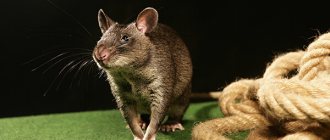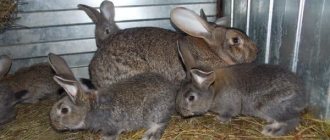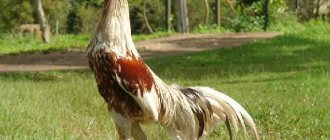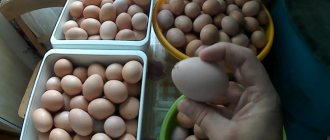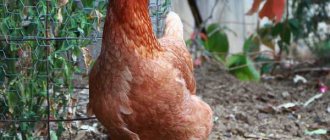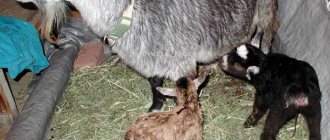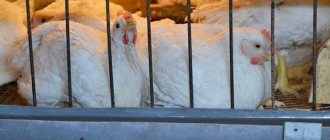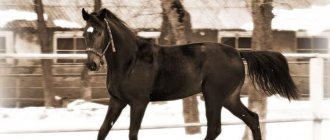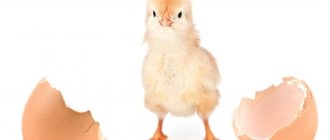Home » Articles about chickens » Aurora chicken breed
The Aurora chicken breed, bred by VNIIGRZh breeders, belongs to the egg production direction. The birds have beautiful plumage and can also be grown for decorative purposes.
A unique breed of amazing Aurora chickens is the key to obtaining a huge number of eggs
Many farmers or simply people who have their own households raise chickens.
Naturally, these can be a wide variety of breeds. But before you start breeding chickens, you need to choose a worthy breed that will meet the needs of the farmer. Today, all breeds of chickens are divided into several directions, among which a special place belongs to chickens for egg and meat production. Chickens of the egg breed are in particular demand, among which one of the most amazing is the breed of chickens called Aurora. Therefore, before purchasing this breed, it is necessary to consider all its features and main characteristics.
How to feed laying hens correctly
Thanks to the diet and the presence of a warm chicken coop, Aurora’s egg production will be year-round. They are fed twice a day, provided they have free range during the day. If chickens are deprived of the opportunity to independently search for food during the day, then feeding is increased to three times a day.
The young are fed three to four times. You can buy ready-made feed in the form of a mixture. As a vitamin supplement, you need to include only grain, green feed, and vegetable tops in the diet. In households, chickens are often given “wet mash” - table scraps.
Here is an approximate daily diet for Aurora chickens and other egg breeds: 120 g of grain (corn, wheat, barley, oats), 30 g of mash, 100 g of boiled potatoes, 2 g of chalk, salt, bone meal, yeast. Experienced farmers advise giving half of the grain sprouted. It is important to adhere to the norms. Overfeeding and, conversely, underfeeding poultry have a detrimental effect on its health and productivity.
Let's look at the components of the diet of egg-laying chickens.
General characteristics of the Aurora chicken breed
The special uniqueness of this breed lies in the fact that it is not only egg-oriented, but is also very often used for decorative purposes. But despite this, it has many of its own characteristics.
An egg breed such as the Aurora differs from its predecessors in that it has a completely different mass. That is why they are able to move very quickly. This is ensured by their low weight and fairly light plumage.
The appearance of the scallop as an indicator of the egg production of a chicken:
On the head of this chicken there is a well-developed comb along with earrings. This breed often has a leaf-shaped comb. This is one of the key features of egg-laying chickens. It is also customary to determine some of its characteristics by the comb of a chicken. If at the age of three months a chicken has a well-developed and neat comb with a rich, bright color, then in the future this particular chicken will be a very good layer. This will allow you to get a huge number of eggs. If the comb is colored pale pink, this will indicate that the chicken is kept in very poor conditions or is completely sick. Therefore, if you decide to purchase this particular breed of chicken, then be sure to pay attention to the condition and appearance of the scallop.
Flaws
- Changes in appearance in subsequent generations.
- Suppressed brooding instinct.
The Russian breed of chickens Aurora Blue is good for breeding in its “native” climate. With minimal costs you can get maximum returns.
This breed group is best chosen by those who are looking for birds with good productivity, beautiful appearance, and easy care. Aurora blue is resistant to frost and has good performance indicators. By creating the proper conditions in the chicken coop and the right diet, it is easy to achieve year-round egg production from each hen in the amount of 16-18 eggs per month.
Chicken egg production and type of eggs
As for the appearance of the eggs, this chicken in most cases lays fairly large eggs that are only white. If the Aurora lays very small eggs, then they can be sold at the lowest price, since it is precisely because of their size that the cost drops. This breed of chicken is capable of laying about 220 eggs per year. This is a good indicator for laying hens. In this case, the weight of one egg will vary between 55 - 58 grams.
As for the weight of the chicken itself, it is quite small. So a regular Aurora chicken weighs about two kilograms, and its smaller version weighs about 1.5 kilograms. It is necessary to remember that the weight of the chicken itself does not in any way affect its egg production. Both small and slightly larger Aurora chickens are capable of producing a fairly large number of eggs per year. Therefore, in order to save money, farmers very often purchase the smallest specimens. This is due to the fact that feeding them requires an order of magnitude less feed, and they are much easier to maintain.
This breed of chicken begins to lay eggs quite early. This is due to their rapid precocity. Already at the age of about 4 months, the hen begins to lay her very first eggs. Egg production rates are increasing every month. Also, do not forget that this breed can very rarely sit on eggs. This is due to the fact that all representatives of the egg orientation are not aimed at carrying out such actions.
The plumage of such chickens is quite dark and is an excellent decorative color, which is very valuable for lovers of rare breeds. Therefore, if you want to purchase not only an excellent laying hen, but also a cool decorative chicken, pay attention to this breed.
onfermer.ru
Productivity
The productivity of Aurora is determined by egg production.
Sexual maturity and average annual egg production
Chickens begin laying eggs after 4 months. It has been noted that early maturity greatly depends on what time of year the chicken was born. Birds that were born from February to March begin to lay eggs earlier than others. This is due to the length of daylight hours.
Peak egg production is observed in birds that are one year old. In subsequent years, this figure decreases by 15-20% annually.
The average annual productivity of one laying hen is 200-220 large eggs weighing 55-58 g each, with a white shell.
These are good indicators of egg production. When compared with highly productive purebred chickens, they can produce up to 370 eggs per year. The record holders are Leghorn hens, whose representative set a world record in 1970 by laying a record 371 eggs.
Breeds of blue chickens
Selection and breeding under human control have led to the fact that many bird breeds are now improved not only from a productive, but also from an aesthetic point of view. Breed characteristics can be very diverse, including color and quality of plumage. There is a European register in which all officially recognized breeds of chickens are registered, the number of which includes several hundred species. Each breed has its own characteristic features, including color. Man has always strived to create the unusual; of course, one of such original creations is blue chickens. The selection of such species is not only aesthetically pleasing, but also commercially profitable.
Breeding
One of the qualities of the breed that breeders had to sacrifice in favor of productivity is brooding. Adler Silvers are excellent breeders, but poor brood hens. Although at the same time the level of fertilization of eggs, and then the survival rate of chicks, is high. This means that in order to breed offspring, individuals of other breeds or an incubator are needed.
The right time for breeding is the first days of May; in this case, there will be no problem with early clutches of immature young animals.
Feeding the chickens
Thanks to the innate qualities of the breed, almost all chickens survive. To achieve the best performance, you need to follow the feeding rules.
Be sure to read:
Chickens Super Nick: description of the breed, photos and reviews from poultry farmers
| Chick age | Feed composition | Feeding frequency |
| First day of life | Hard-boiled egg, a small amount of semolina | Every 1 – 1.5 hours |
| 2 – 5 days of life | Egg, finely chopped fresh herbs (dandelion leaves, chickweed, nettle). You can give yogurt separately (whole milk is not allowed) | Every 2 hours |
| 5 – 10 days of life | Gradually reducing the amount of eggs, increase the greens, add finely grated raw vegetables: pumpkin, carrots, beets. Mix dry yeast and fish oil into the food. Allowed to introduce special feed | Every 3-4 hours |
| Up to 28 – 30 days of life | Make wet mash from greens, first feed, cottage cheese, vegetables (add potatoes). Place a container with sand and crushed shells in the cage. | Every 4 hours, no night feedings |
| 1 to 2 months | Gradually add crushed barley to the previous diet | Morning, afternoon, evening |
general information
It must be immediately recognized that the decorative purpose is far from the most important; breeds of blue chickens lay eggs well, many of them are bred for meat and egg purposes. And here the exotic already fades into the background, productivity is more important. The most common laying hens can be blue in color. But there are also breeds that were specially bred in this coloring. It should be noted that at birth, color is not always determined absolutely accurately. Similar signs appear after the young animals reach about 2 months of age. Chicks fledge as adults, and then the congenital trait becomes obvious.
There are main categories into which chicken breeds are divided:
Each of them has blue representatives. They are similar only in one thing - the exotic type of plumage, everything else (life expectancy, character, temperament, egg color) differs. There are a lot of blue chickens bred through selective breeding. We offer you a description of the most popular varieties.
What are they good for?
- Versatility.
- Long period of egg production.
- Endurance and resistance to chicken diseases.
- Friendly, calm disposition and sociability.
These are advantages, but there is one weak point. The Adler breed of chickens most often fails to fulfill their maternal duties, which is why poultry farmers have to replace mothers for chickens using an incubator.
So we looked at one of the most popular breeds of laying hens.
Good luck and success to you!
Subscribe to site updates and you will always be the first to receive new, interesting information about feathered beauties!
See modern products for poultry and livestock farmers that improve the health of pets and make our work easier.
Popular individuals
Andalusian breed
This bird is primarily an egg-laying bird. It was bred, as the name suggests, in Spain. Minorca chickens were used as selection objects. Andalusians are excellent layers, they are distinguished by a high degree of decorativeness, and they are very beautiful. The blue color of each feather is decorated with a spectacular border of a shade darker than the general one. All this creates an incredible impression of the bird. This type of chicken gained the greatest popularity in its homeland. Despite the fact that Russian poultry farmers would like to breed this breed, this is difficult to do due to the heat-loving nature of the individuals. The harsh climate of our country does not suit her.
Characteristic features of the breed:
- a high degree of egg production, and this process does not stop throughout the year, however, in the winter it is necessary to maintain comfortable living conditions;
- not too strong immunity, low survival rate, lack of resistance to diseases, any draft, cold, temperature changes can lead to diseases;
- The brooding instinct is very weak, females are not very caring, so keeping and breeding chickens will require special treatment.
Cochin chickens
These are quite large representatives of the feathered tribe, they are quite active and lively. They were developed in China, but now they are distributed throughout the world. They are distinguished by a huge number of color options, including blue. However, other external features are extremely similar. This breed is a decorative species, although meat is also eaten. Features of this breed:
- very large size and weight of the bird, minimum – 5 kg;
- underdeveloped egg production, small eggs;
- roosters and hens are distinguished by their tall stature, powerful build, and well-developed muscles;
- the plumage is very lush, including limbs and fingers;
- shortened, stubby tail, regardless of gender;
- puberty and the ability to reproduce occurs after 8 months;
- chickens take a very long time to fledge;
- weight and size grow very quickly;
- females hatch chicks quite well, they are very caring.
Russian breed (Aurora)
Of course, when breeding blue chickens, the exterior is of great importance. The domestic representative of birds of this color stands out for its spectacular appearance. She received recognition not only in Russia, but also abroad. In addition to their attractive appearance, chickens of this breed are very resistant to difficult climates and frosts. Its high productivity makes it very attractive for breeding. Features of the Russian breed:
- the main direction in breeding is egg production;
- puberty is early, so keeping chickens is quite cost-effective;
- already at 5 months she brings her first eggs; with proper care, she brings more than 200 eggs per year, the weight of the eggs is up to 62 grams;
- the average weight of chickens is from 2 to 3 kg, the taste of the meat is good;
- the disadvantage of the breed is that of the two chickens born, one does not inherit the characteristic characteristics of the parents, therefore this breed is often not distinguished as a separate one;
- the disposition is benevolent, calm, friendly, however, birds of this breed have a very anxious character, they get scared easily and are not very stress-resistant.
Breeding history
There is no exact information regarding the breeding of these chickens. It is known that this is a Russian breed, which was obtained by VNIIGRZh breeders. Australorps were selected to breed birds. At the same time, scientists tried to obtain a universal breed.
As a result, it was possible to develop a breed group that is characterized by excellent egg production parameters and unusual external features. That is why Aurora chickens are both decorative and egg-laying .
Aurora Blue breed of chickens
Despite the fact that the chicken has been around relatively recently, little is known about it. Information about the origin of laying hens cannot be found in the public domain. It is known that scientists from the All-Russian Research Institute of Genetics and Breeding of Farm Animals (VNIIGRZh) worked on the creation of the blue beauty.
Initially, scientists planned to breed a universal blackfish that could have attractive external characteristics. To achieve their goal, geneticists used representatives of the Australorp breed.
The problem with the resulting hybrid is that in the second generation the color splits - not only blue, but also white and black cubs are obtained. According to the type of productivity, the Aurora Blue chicken breed is classified as an egg breed. Officially, the Pushkin Gene Pool is engaged in the sale of hatching eggs, as well as pedigree young animals.
Hatching instinct
It is extremely rare for crosses of the egg direction to become good mothers for their offspring. Chickens of the Aurora Blue breed were no exception, and as a result of breeding work they have practically lost their brooding instinct.
But, independent breeding of this variety is practically not practiced by poultry farmers, and to renew the livestock, most prefer to purchase a fresh batch of young stock or incubation material.
External signs
Thanks to long-term selection work, the bird inherited an incredibly attractive appearance from its ancestors. The color of both sexes is blue, with a dark border on each feather. Roosters have a slightly darker mane, back and wings, and their feathers are evenly colored. The horizontally positioned body has a slightly elongated shape and is generally harmoniously built.
The “ladies” have neat, small heads on short necks. Roosters have larger ones. The main feature is that representatives of both sexes have large, well-developed leaf-shaped combs of a contrasting red color, like the earrings.
On the face it is impossible not to pay attention to the huge, expressive eyes of brown or orange. The beak is small and colored blue-gray, matching the paws. To complete the picture of appearance, let’s also consider weight indicators.
- An adult rooster has a body weight of 2.5 kg to 3 kg.
- An adult laying hen weighs 2-2.5 kg.
Character
The temperament of feathered beauties is a little complex - they are timid and overly cautious. They take a very long time to get used to their owners, but even after that they try to stay away from people.
The winged family loves activity and shows curiosity about everything that happens around them. Male representatives are non-conflicting, and even when kept together with other species, they behave quite restrained.
Chickens
The chicks of this breed are unique. In the second generation, the family produces half of the cubs with the same color, and 25% each of white and splash. Despite the fact that the main decorative feature - color - is lost, productivity remains at the same level in subsequent generations. The sex of the cubs can be distinguished only closer to 3-4 months. The survival rate among young animals is 90-95%.
An important nuance - when purchasing day-old offspring, it is not always possible to get 100% of the birds with the color specified in the standard. Buying a hatching egg does not guarantee this either. Experienced poultry farmers claim that in each generation 5-10% of the population has to be culled.
As for caring for the cubs and feeding, there will be no difficulties in this. Chicks eat everything that everyone else eats. At the very early stage of development, they have to eat only mash consisting of greens, eggs and cereals, and later they supplement the menu with cottage cheese, yeast, vegetables, and at 2 months they are transferred to an adult kitchen.
Diseases
Adult laying hens, when kept in proper conditions and fed properly, rarely get sick - the cross's immunity is strong. To prevent parasitic diseases, chickens are allowed to bathe in a mixture of ash, sand, and feed sulfur. Chicks are susceptible to infectious diseases, so it is important to promptly vaccinate them against major diseases. Hygiene in the chicken coop must be maintained - cleaning is carried out, and when the season changes, old litter is thrown away. Equipment is washed and disinfected.
Feeding an adult family
It is best to compile a diet using tables for representatives of the egg orientation. It is recommended to divide the daily food intake into 3 feedings in winter, and 2 feedings in warm seasons, when 1 meal is replaced by grazing.
Let's look at an approximate daily diet, calculating grams per 1 bird.
- Grains are the main component of bird feeders. The approximate amount is 60-65 grams in summer, and 70-75 grams in cold weather. Wheat should predominate in the grain mixture.
- About 20-25 g of wheat, oat or rye bran, and a little more in cold weather.
- Potatoes and carrots - about 100 g, and a little more in winter.
- Fish meal, as well as chalk - about 5 grams in winter, and 2 times more during the period of active laying. Table salt in the amount of 1 g is also recommended as an additive.
Feeding these chickens in winter does not differ from the standard.
Incubation
When breeding chickens of this cross using an incubator, you must follow standard incubation rules.
Table of temperature and humidity modes
| Period |



